Election Cryptid: #3 – South Carolina Parakeet
Posted by: Loren Coleman on January 21st, 2012
Today’s cryptid is the Carolina parakeet, allegedly extinct but which may have surviving remnants, as reported from South Carolina.
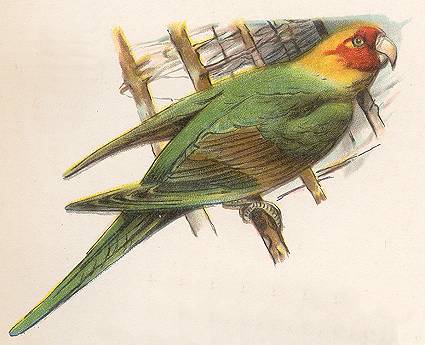
Art by Charles R. Knight.
The Carolina parakeet (Conuropsis carolinesis), a noisy, foot-long species, possibly the most colorful bird in North America, used to be a permanent resident of the coastal plains of the South, including South Carolina. The supposedly extinct species was the only parakeet (or parrot) native to the eastern United States. It inhabited regions from the Ohio Valley to the Gulf of Mexico and forests of the great plains as far west as the Dakotas. These native parakeets also were reported to have inhabited southern Florida westward to central Texas.
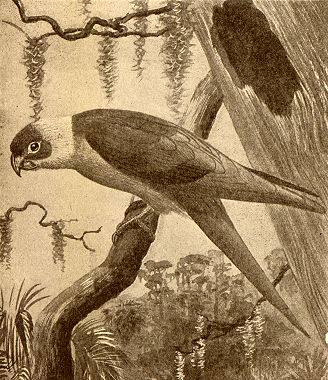
Art by Edmund J. Sawyer.
The Parakeets became rare by the 1880s. Incas, a Carolina Parakeet in the Cincinnati Zoo died on February 21, 1918. The last reported sighting in the wild was a small flock Florida in 1920. It was declared extinct by the American Ornithologists Union in 1939.
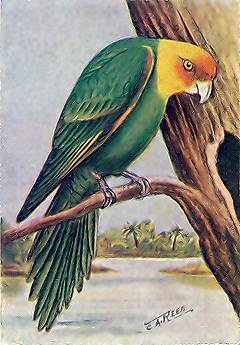
Art by Charles A. Reed.
Unconfirmed sightings of this wild parrot were reported in Alabama, Georgia, Florida and in the Santee Swamp of South Carolina into the 1930s. The actual date when the Carolina parakeet became extinct in its natural range is unknown but some ornithologists believe a few individuals survived until the late 1940s or early 1950s in Florida and South Carolina. The reasons for the reported extinct has been laid to habitat destruction, large numbers being shot for feathers, food and fun, and even foxes eating all of them. But several ornithologists don’t believe these factors precipitated the rapid extinction of the last populations. For instance, one of the last healthy populations of Carolina parakeets, located in the Lake Okeechobee area of Florida, vanished even though adequate habitat remained and the birds were not persecuted by shooting or trapping, according to “The Extinct Carolina Parakeet” and other sources.
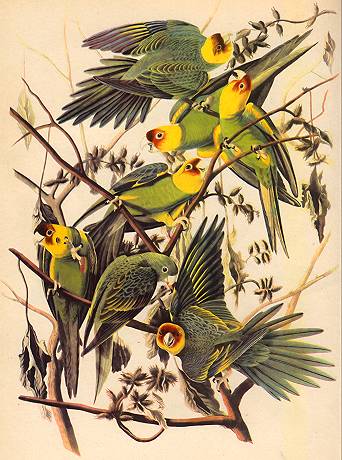
Art by John James Audubon.
Are they still being seen in South Carolina? (Do not confuse them with random populations found in some areas of South American feral parrots and parakeets, which have been well-documented.)
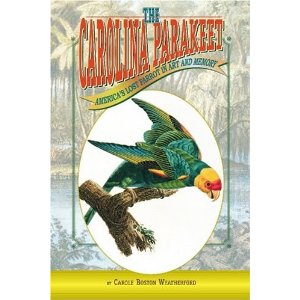
An excellent book on the topic is the 2006 volume, The Carolina Parakeet: America’s Lost Parrot In Art And Memory by Carole Boston Weatherford.

Carole Boston Weatherford
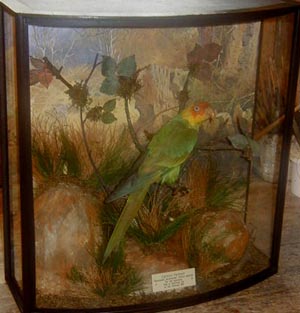
The International Cryptozoology Museum is attempting to obtain a Carolina Parakeet (as shown from here) for its collection. Do you know of any?
About Loren Coleman
Loren Coleman is one of the world’s leading cryptozoologists, some say “the” leading living cryptozoologist. Certainly, he is acknowledged as the current living American researcher and writer who has most popularized cryptozoology in the late 20th and early 21st centuries.
Starting his fieldwork and investigations in 1960, after traveling and trekking extensively in pursuit of cryptozoological mysteries, Coleman began writing to share his experiences in 1969. An honorary member of Ivan T. Sanderson’s Society for the Investigation of the Unexplained in the 1970s, Coleman has been bestowed with similar honorary memberships of the North Idaho College Cryptozoology Club in 1983, and in subsequent years, that of the British Columbia Scientific Cryptozoology Club, CryptoSafari International, and other international organizations. He was also a Life Member and Benefactor of the International Society of Cryptozoology (now-defunct).
Loren Coleman’s daily blog, as a member of the Cryptomundo Team, served as an ongoing avenue of communication for the ever-growing body of cryptozoo news from 2005 through 2013. He returned as an infrequent contributor beginning Halloween week of 2015.
Coleman is the founder in 2003, and current director of the International Cryptozoology Museum in Portland, Maine.










I live in South Carolina but I have never seen a Carolina parakeet. I find it odd that a healthy population disappeared at Lake Okeechobee. Perhaps there was some kind of illness that wiped them out? Or maybe a major hurricane? I have a soft spot for this cryptid. Back when I was really young a had a poster of the fourth photo down in the article. Its a shame the Carolina parakeet is extinct (or near extinction). I would have loved to see this beautiful bird stick out like a soar thumb amongst sea gulls, laughing gulls, pidgeons, pelicans, and cranes.
With several species of exotic parrot establishing US populations in suitable areas, it would be kind of difficult to credit any report of a Carolina Parakeet, although an experienced ornithologist might be able to sort it out.
I live in the Tampa Bay area and see parakeets all the time, nearly daily. They of course are monk parakeets and nanday parakeets rather than this cryptid. Could there be remnant Carolina parakeets? Sure, but as mentioned above it would be really difficult for someone that is not trained in telling the difference by sound or sight if they were Carolina parakeets or another species. Plus, they would have to fight for food and space with the non-native species. Then there is the chance they would interbreed with the non-natives and then wipe out the remnant population that way.
Is this a Carolina Parakeet? From a birders blog.
Looks convincing…